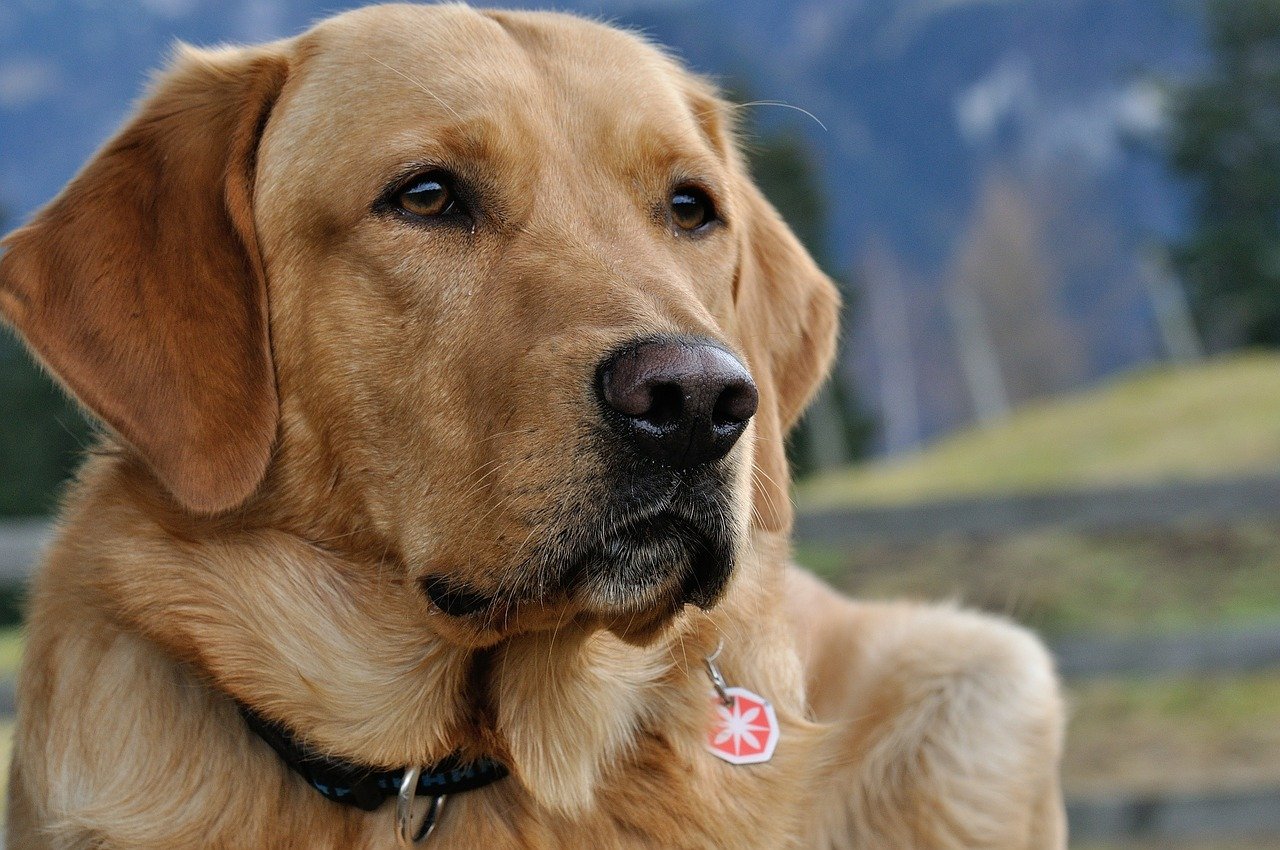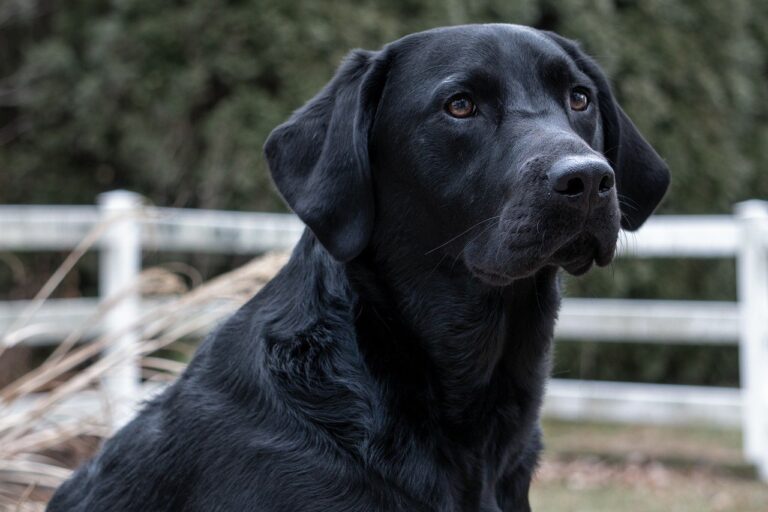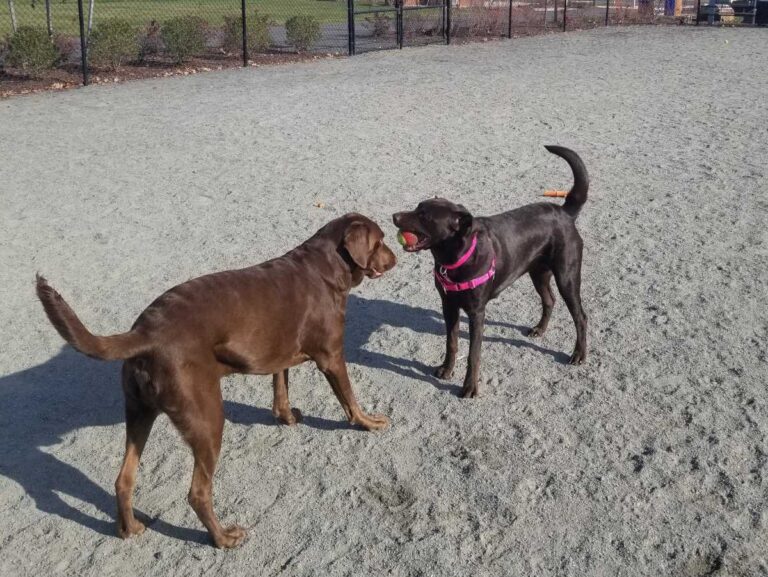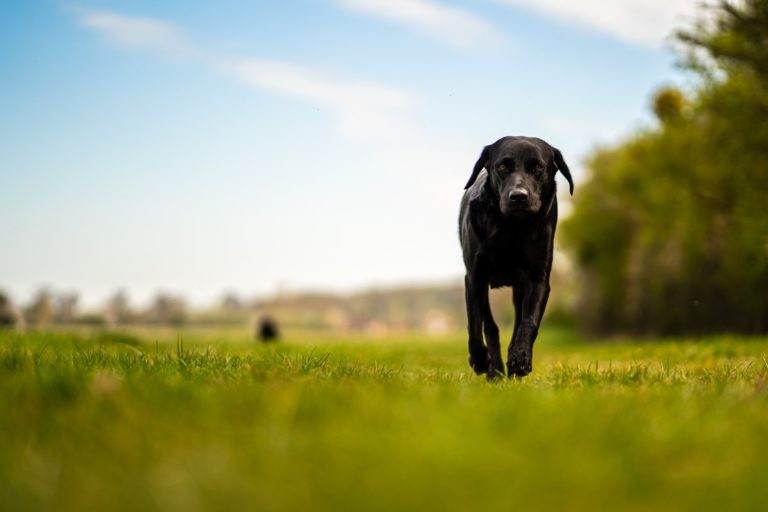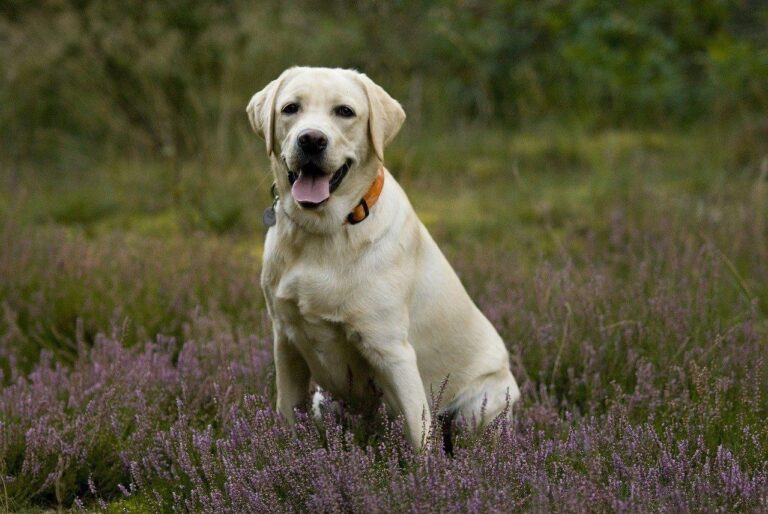Many people fall in love with the Labrador Retriever dog breed for their amazing qualities and lovable characteristics. We tend to think they’re pretty awesome dogs!
But not everyone can tolerate having a dog in their home, especially people with pet allergies. Certain types of dogs can aggravate someone’s allergies to more of an extent than other breeds of dogs.
So if you’re new to the dog world, you might be wondering, “Are Labradors hypoallergenic?”
Unfortunately, the answer is no, though we happen to think they’re fabulous for all their other amazing qualities.
(This article may contain affiliate links. As an Amazon Associate I earn from qualifying purchases. Learn more)
But if you’re a person with an allergy to dogs, a Labrador might aggravate those existing allergies if you choose to share your home with one.
We’re going to give you a quick guide to what hypoallergenic dog breeds are, what traits of a Labrador make them a challenge for someone with allergies, and give you a list of other dog breed options also.
We’ll also cover what you can do if you’re already sharing your space with a Labrador to help minimize their shedding and its effect on your allergy symptoms.
Let’s get started!
Are Labradors Hypoallergenic? A Clear Guide to Hypoallergenic Dog Breeds
What Are Hypoallergenic Dogs?
The term hypoallergenic is defined as something “designed to reduce or minimize the possibility of an allergic response.”
This means that something referred to as hypoallergenic is not necessarily guaranteed not to provoke allergies, only that it is more likely to minimize or lessen an allergic response.
Some people incorrectly assume that hypoallergenic means “a dog that doesn’t shed.” It actually has less to do with their hair or fur in most cases.
Dog allergies in humans are not typically caused by the actual hair or fur of the dog. They’re usually a reaction to the dander (dead skin), saliva, and/or urine of the dog.
The allergy symptoms you or someone in your home might suffer from, such as sneezing, itchy eyes, watery eyes, runny nose, or skin rash, can result from your immune system reacting to the exposure triggered by the dog.

Different people might have a different level of allergic reaction to the same dog, and not all dogs will cause a reaction in the same person.
The size of the dog, the amount of close contact you have with it, and the level to which your dog shares your space (such as your sofa, bed, or car) can influence how affected you can be by them.
There are no completely guaranteed hypoallergenic dogs because any dog can shed skin, saliva, or urine, and the degree to which it affects a person can vary.
However, some types of dogs, such as Labrador Retrievers, do shed a great deal of fur, more so than other breeds, and this can exacerbate the amount of dander a person can be exposed to.
So while no dog is truly hypoallergenic, and any dog has the possibility of triggering someone’s allergies, there are certain types of dog breeds that might shed less and possibly be less likely to trigger someone’s allergies.
We’re going to go over that list of breeds in just a moment, but let’s answer a few more questions regarding this issue, “Are Labradors hypoallergenic?”
Are Black Labs Hypoallergenic? Are Yellow Labs or Chocolate Labs Hypoallergenic?
All types of Labrador Retrievers would fall within the same category, and would not be considered a hypoallergenic dog.
Black Labs are not hypoallergenic, and neither are yellow Labs or chocolate Labs. Color would not have an effect on the Lab being non-hypoallergenic, so it won’t matter which color Lab you are considering in that respect.
In addition to not being hypoallergenic, Labradors are known for being excessive shedders. They have a double coat and tend to shed their undercoat heavily in the spring and fall.
Labradors also shed throughout the year, and keeping up on managing their shedding is a frequent task for owners.
We’ll cover this topic more in a moment, but for an in-depth look at managing Labrador shedding, take a look at our guide to help reduce the shedding problem in your home.
What Other Dog Breeds Might Be Good For People with Allergies?
Since any dog has the possibility of triggering your allergies, what should you do if you’re interested in adding a dog to your life?
While you could possibly have an allergy to any dog’s dander, saliva, or urine, there are some breeds of dogs that might be less likely to trigger those allergy symptoms.
These dogs can be lower-shedding breeds, which means that less of their fur or hair will be coming off their bodies and found all throughout your home, car, or furniture.
In shedding less, they might be less likely to also shed the dander (skin) that could be the cause of your allergies.
So even though they still have dander, saliva, and urine, you might be less exposed to them through this lower shedding.
Be aware that you can still have allergies to any dog, and that each person can have a unique immune response.
According to our friends at the American Kennel Club, here is a list of dog breeds that might be worth considering for someone concerned about dog allergies:
- Afghan Hound
- American Hairless Terrier
- Bedlington Terrier
- Bichon Frise
- Chinese Crested
- Coton de Tulear
- Giant Schnauzer
- Havanese
- Irish Water Spaniel
- Kerry Blue Terrier
- Komondor
- Lagotto Romagnolo
- Maltese
- Mini Schnauzer
- Peruvian Inca Orchid
- Poodle
- Portugese Water Dog
- Puli
- Shih Tzu
- Soft Coated Wheaten Terrier
- Spanish Water Dog
- Standard Schnauzer
- Xoloitzcuintli
- Yorkshire Terrier (Yorkie)
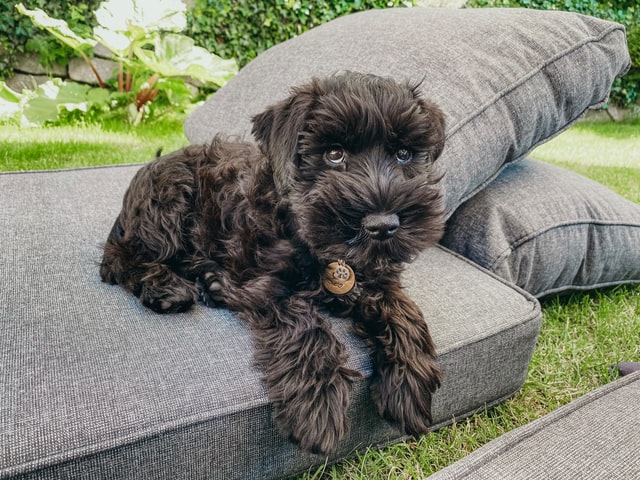
Are Labradoodles Hypoallergenic?
Since we’ve answered the question, “Are Labradors hypoallergenic?”, that brings us to another similar dog that shares some Labrador traits, the Labradoodle.
A Labradoodle is a mixed breed of dog that is created by breeding a purebred Labrador Retriever with a purebred Poodle.
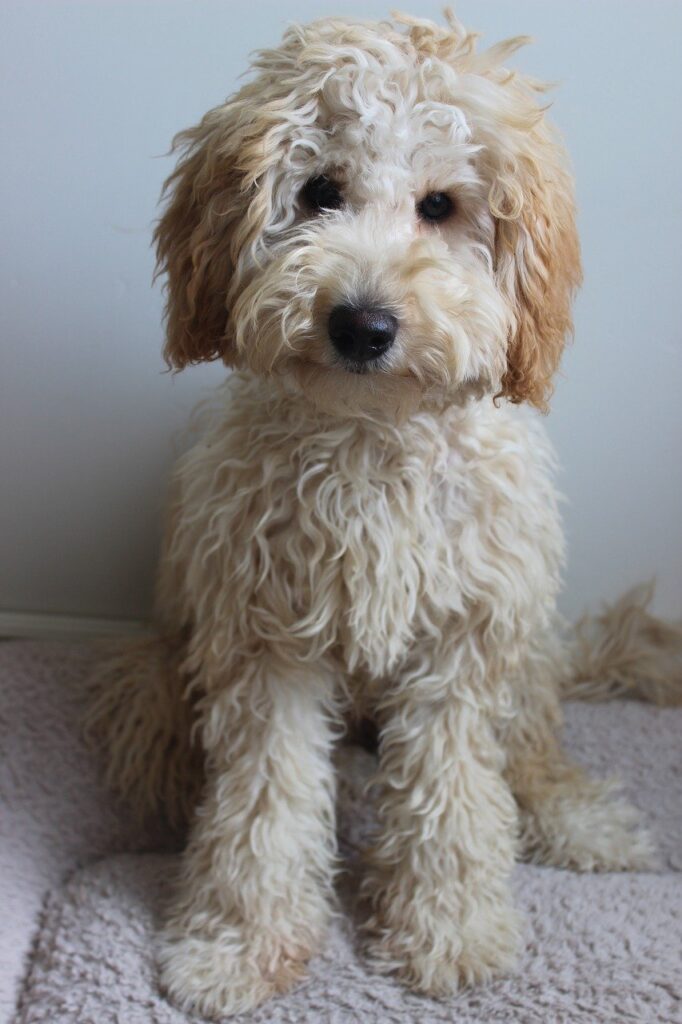
The Poodle is one of the dogs listed on the AKC list we mentioned in the previous section as being a better choice for people with allergies.
You can find Labradoodles in miniature sizes, standard, and large, depending on the size of the Poodle the Labrador Retriever was bred with.
You can also find different types of Labradoodles that have a different percentage of Labrador or Poodle in them.
For example, an F1 Labradoodle is 50% Lab, 50% Poodle.
An F1b Labradoodle is 25% Lab and 75% Poodle.
Because Labradoodle types can be a bit confusing, we have a guide to help you understand all about Labradoodles, their types, and the different characteristics of each.
So would Labradoodles be considered hypoallergenic?
As we mentioned above, there really isn’t any type of dog that’s guaranteed to be hypoallergenic, but the Labradoodle does shed less than a purebred Labrador, so you might experience less dander.
Therefore, the Labradoodle might not bother your allergies as much as a purebred Labrador Retriever would.
You can also consider getting an F1b Labradoodle which is 25% Lab and 75% Poodle, and because it has a larger percentage of the Poodle traits rather than the Labrador’s, you might find this helps your allergies as well.
I Love My Lab, But I Have Allergies. What Can I Do Now?
Now that you know more about the meaning behind the term “hypoallergenic dogs,” and are aware that Labradors are not hypoallergenic, you might be wondering if there are steps you can take to help reduce dog allergies from occurring in your home environment.
If you already have a Labrador in your life, and you’re trying to make it work, we love you for it! Labs and allergies do not always make a good combination, but there are some things you can try to do to make your situation better.
There are a few strategies you can implement that might help make an improvement in your home, and possibly reduce the struggle your dog allergies might be causing you.
Control the Labrador Shedding Problem
This is such a common issue and frustration for Labrador owners that we actually have an entire guide written on the subject of Labrador shedding to help you!
We go into much more detail in that article, but we’ll go over a few quick points here.
Controlling the shedding of your dog requires a really good brush, and there’s no better tool we’ve found for Labradors than the Furminator.
The Furminator is a special brush that removes the dead undercoat from your dog and will help reduce the amount of fallen hair and fur you’ll see around your home.

By reducing this, you might find that less dander is triggering your allergies.
If you’re allergic, have a friend or family member be the one to use the Furminator on your dog, preferably outside in your yard or in your garage.
It’s likely that the amount of hair removed from your dog will definitely trigger your allergies! So if possible, if you’re allergic, have someone help you with brushing your dog for you.
Keep Your Dog Off of Furniture, Beds, and Car Seats
Another strategy to helping deal with Labradors and allergies in your home is to try to keep your Lab off of surfaces where people sleep, rest, or hang out for long periods of time.
These would be places like beds, sofas, other soft furniture around your home, and the seats of your car.
We know, this might be a challenge, especially if you have a pampered Labrador used to enjoying the most comfortable spots in your home!
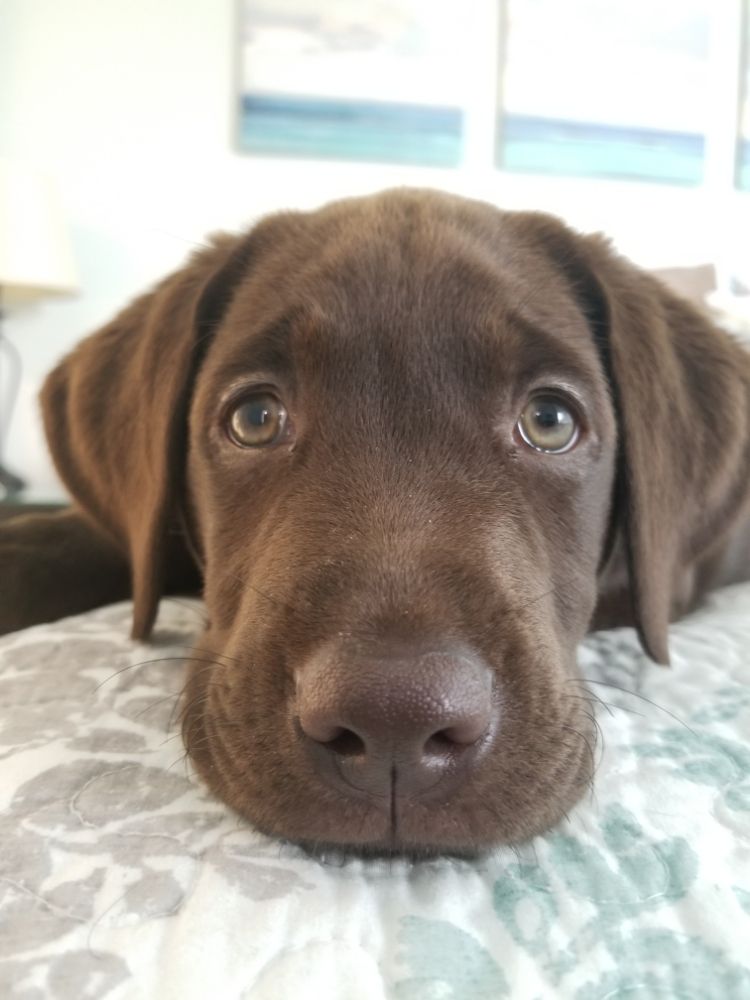
Anywhere that might be difficult for you to easily clean and vacuum should be a place that, if you have allergies, you might want to restrict your Labrador’s access.
If you can’t keep them off entirely, try to cover these surfaces with a sheet or, in the case of car seats, a cover or hammock to limit the amount of dog hair that transfers to the surfaces you are on.
You might also have to clean these surfaces more frequently than people who do not have pets, especially if your dog is triggering your allergies.
Give Frequent Baths
Keeping your dog clean is another tip to help manage the shedding that might be triggering your allergies.
Labradors should not be bathed too often, as it could dry out their skin and hair.
However, you should definitely keep your Lab on an occasional bath schedule, so that they do not go too long without one. Once a month is generally a good idea if you’re looking for a place to start.
This will also help get other allergens off your dog, such as grass, pollen, or other substances that can also exacerbate your existing allergies.
Vacuum Often and With the Right Equipment
Make sure that the tools you’re using are actually built to deal with Labrador hair. Many vacuums are not really intended for use to combat pet hair.
Having the right vacuum can make a huge difference in how much dog hair you’re seeing around your home. We go into more detail about our recommendations here for which ones we’ve had success with in conquering Labrador hair at home!
Keep on a regular schedule with vacuuming, and the dog hair will be easier to manage. We also give you some recommendations in the article above for the best robot vacuums that can be programmed to take care of your dog hair every day, so it never builds up!
We highly recommend making the tools around your home work for you to keep ahead of the shedding problem, even if you’re a person without allergies.
Summary – Are Labradors Hypoallergenic?
While Labradors have many amazing qualities that make them the most popular dogs in the United States, they cannot be considered hypoallergenic.
We absolutely love Labradors but know that they aren’t necessarily the perfect choice for everyone. Their thick double coat can definitely bring on a release of dander that can cause frustration and discomfort for people sensitive to it.
If you’re a person with dog allergies and looking for a dog that may be less likely to trigger them, we suggest you take a look at the list above to give you an idea of what research to do on other dog breeds.
If you love the traits of the Labrador Retriever, a good compromise could be a Labradoodle, which might be worth a further look for you.
And if you already have a Lab in your life and are trying to improve the effects of their shedding in your home, we hope that this article has given you some strategies that you can start implementing today to make things a bit easier around your house.

